The leadership qualities of geese have been cited in business seminars and offer an interesting insight into sharing the load of leading. In this article, we take a closer look at how geese choose the leader of their flying formation, why it is in the shape of a V, and why sometimes one side of the V is longer than the other. So how do geese decide who leads?
Geese decide who leads their flying formation by taking turns sharing the responsibility. Geese typically take an equal share of leading their flying formation to split the load among multiple birds.
Let’s learn more about how geese decide who leads their fly formations.
How Do Geese Decide Who Leads?
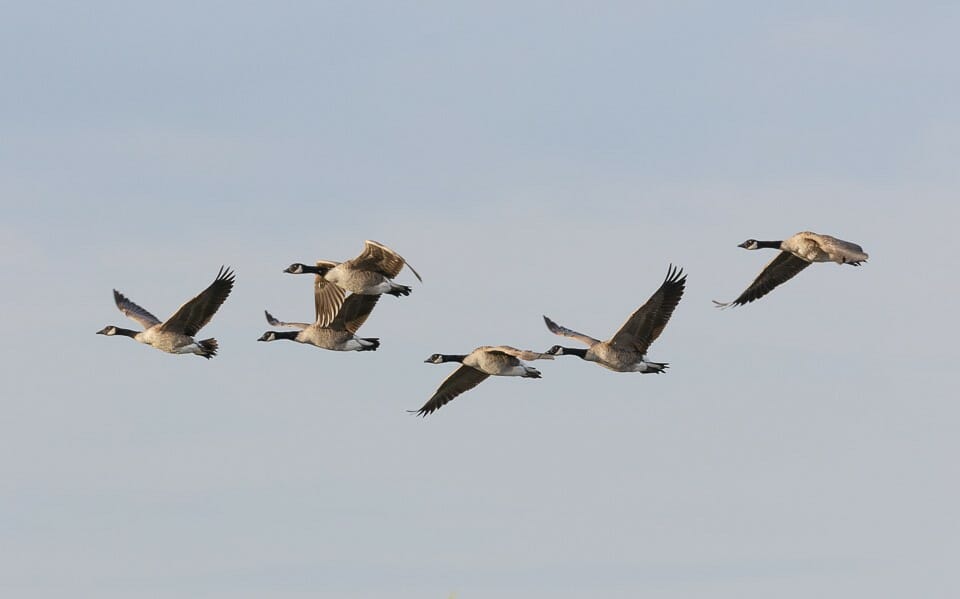
It may seem as if geese follow a set leader as flocks gracefully cross the spring and fall skies on their migratory paths, but the bird that leads the flock has nothing to do with the hierarchy of the flock, nor any outstanding physical attribute.
Author Note: The vertex of the formation is a taxing place to be, and as such, the bird that leads the formation changes at regular intervals. Geese are socially developed birds and seem to do well at sharing this responsibility, even offering support to the leader with their honking calls.
Research has shown that the passage of the leading bird through the air provides an aerodynamic increase in the lift to the bird following behind. This ideal location is just above, behind, and to either side of the lead bird, which in turn develops the iconic V formation – known as an echelon.
Early Research
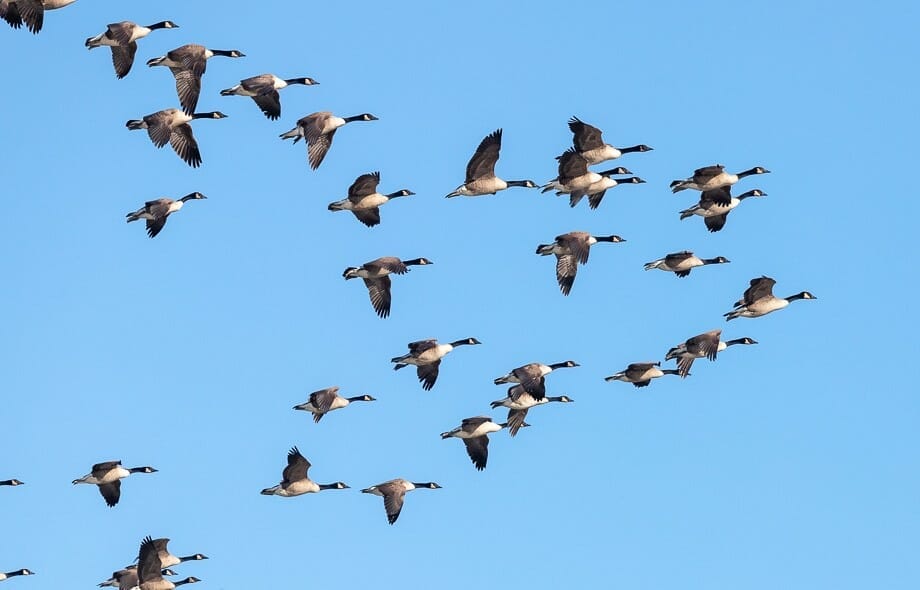
Early photographic evidence of geese’s echelons in flight led researchers to believe that the positions that individuals would take within the formation were often not in optimal locations.
Some geese seemed to take an aerodynamically optimal position. In contrast, others would take up a position better suited to maintaining visual contact with the flock, and others still would not be in an optimal position for either purpose.
Video Evidence
Recently, more comprehensive videographic evidence shows that the positions of birds within the formation are actually much more fluid than first thought, and changes can occur multiple times a minute, sometimes taking less than a second for both birds to complete the maneuver.
With this insight came an understanding that the early still photographs may have been somewhat misleading about the birds’ ability to maintain a perfect formation position.
Aerodynamic Boost

The optimal aerodynamic location is actually very specific and undulates with the beating of the wings of the lead bird. Researchers were expecting that the following birds would maintain the perfect rhythm and location only about 20% of the time. Instincts run strong, though, and they are able to mirror the wingbeats and maintain this optimal aerodynamic position much more consistently than original estimates suggested.
The aerodynamic benefit is slightly like one car drafting behind another. Still, where drafting uses a low air pressure pocket directly behind the lead car where the air has been pushed from, the V formation instead utilizes lift from the high air pressure areas, where the air has been pushed to.
The way geese can hold their position information, even in gusty conditions, seems almost as if they can visualize the air’s moving currents.
Feathers on the leading edge of the wings feed the bird information about the moving air currents, but it is the wing’s trailing edge that affects flight characteristics.
In the fraction of a second between the leading edge of the wing detecting a change in airflow and the trailing edge of the wing reaching that change, the bird can adjust and compensate at almost precisely the moment it needs to.

Sharing the Load
The additional lift provided by the lead bird actually increases slightly for each bird in turn, so the two birds at the rear of the echelon reap the most benefit. However, the bird occupying this advantageous position rotates in precisely the same manner as the less desirable lead position.
Using heart monitoring and other sensors, researchers confirmed that, due to rotating their position within the formation, the amount of energy used by each member of the flock was very similar.
Using this and other data, speculation suggests that flying in a V formation could be as much as 70% more efficient than flying solo. For geese on a migration covering several continents, this efficiency gain could mean the difference between arriving in time to claim the best nesting locations or arriving too late.
Vantage Point
Author Note: In addition to the gain in lift provided by the leading birds, the V formation also makes it easy for the flock to maintain visual contact with one another. For geese, who take group responsibility seriously, this is very important.
If one goose is unable to keep up with the flock, two other geese will break formation and accompany the straggler down to the ground and will remain with it to provide protection and support until it is well enough to take flight and rejoin the flock.
Why Is One Side Longer Than The Other?
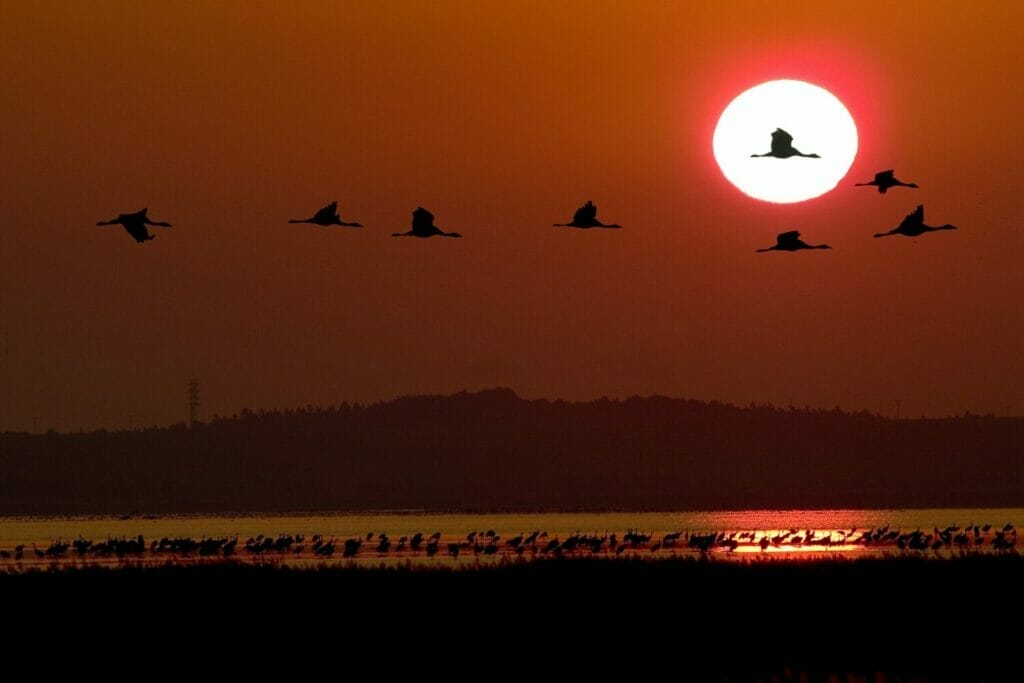
One might notice that often one side trailing the V is longer than the other. We believe the reason for this is due to wind direction. Usually, geese will not fly directly into the wind; therefore, there will be slightly more benefit to the lift generated by the leading bird on one side than the other. The longer tail will usually be on the side, providing a greater lift.
Rearing Young
It was initially thought that the V formation was taught to younger birds by the elders of the flock. However, some orphaned goslings were trained to fly by their adopted parent – a microlight aircraft pilot.
After a few failed attempts, these juvenile birds almost instinctively adopted a perfect V formation, without any experienced hands (or wings) to show them how. It is believed that parents teach their young their own migratory routes, and these lessons may start incredibly early.
Parents begin communicating with the young while they are still in the shell, possibly imparting wisdom and developing relationships while the goslings are still in an embryonic stage.
The female (goose) and male (gander) stay with the young (goslings) and provide aggressive protection to the nest area and to the young after hatching. Geese are territorial and alert, fiercely accosting anything approaching their nesting site.
Young birds are able to walk within 24 hours of hatching and immediately begin feeding themselves on the same diet they will enjoy throughout their lives – grass and aquatic plants, fish, and small insects.
Both parents share the work of building the nest and the responsibility for raising and protecting the young. Once the eggs hatch, the parents lead the goslings away from the nest to the relative safety of freshwater.
At about ten weeks of age, the goslings have grown their flight feathers and are ready to fly with the flock. Juvenile birds remain with their family flock for about a year before leaving the family group to attempt to find a mate for themselves.
Geese Mating Patterns

Geese are loyal birds, and after spending two years away from their family group, they have usually found their perfect mate, having attained sexual maturity at three years of age. Once mated, geese remain paired for life, reaffirming their partnership through caring displays of affection – extending their necks towards their partners, rolling their heads, and with extended honking greetings.
Mating rituals have a few stages – enticing, exciting, mounting, treading, copulating, recovery, and after-displays. These rituals may be repeated up to 5 times daily. Depending on the species, it can take up to 35 days for the goose to begin laying, and the eggs can take a further 25 days to hatch.
On average, geese live for 20-30 years, but some individuals have survived to a much greater age.
Emotions
Geese are emotional birds, and they wear their hearts on their sleeves. The gentle and caring nature of geese is well evident, and they show affection not only for their mate and young but also for other members of the flock, people, and even other species of birds and animals.
Author Note: Geese have been documented displaying more profound emotion too, mourning for lost eggs, young, partners, and flock mates. When a partner dies, the widowed bird can take up to a year or more to grieve before searching for a new mate.
The aggressive nature of geese is the emotion that they are most noted for, though, so much so that a guard goose is a common (and possibly more effective) replacement for a rooster among a flock of chickens.
Suppose geese feel that they, their nest, young, or partner are being threatened. In that case, they will display their defensive nature by extending their necks, honking and hissing warnings before attacking with extended or flapping wings, charging, flying at, and biting offenders.
When they are not under threat, geese are quite accepting of other species, I mentioned a guard goose for chickens, but flocks of domestic geese have also been known to take other animal species under their collective wing.
There is a story about the runt of a litter of piglets adopted by geese. The flock provided protection to the little one from the bullying of its bigger siblings.
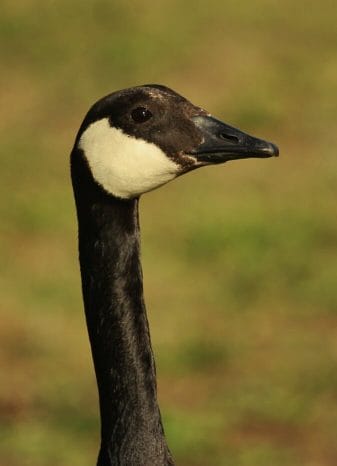
Hunted
Some natural predators of geese include foxes, wild dogs, and raccoons. Goslings on the water can make a supper for large predatory fish such as pike. Predatory birds might make a meal of young or injured geese, and eggs are coveted by any number of mammals, reptiles, and other birds.
That being said, geese are not easy prey. They are big, powerful, and intelligent birds. In most circumstances, a predator would be dealing with an angry flock and not a solitary bird, recommended only for the wiliest of coyotes!
Conclusion
The biggest threat to geese, though, as with so many species, is a man. Hunted the world over for their meat and feathers, humanity poses the most significant risk to goose populations. We hope you found this article about how geese decide who leads their fly formation useful.
Fly high friends!
FAQ
A flying formation of geese is called a “V-formation” or a “V-flight” or “V-shape”. This formation helps geese to fly in a more efficient way, as the birds in front create an air current that makes it easier for the birds behind to fly.
Geese fly in a V-formation to conserve energy, communicate and coordinate their flight and also as a protective measure. They take turns leading the way and conserving energy while taking advantage of the lift created by the bird in front. This allows them to fly more efficiently and cover greater distances.
The one side of a geese V-formation is longer because the birds on the inside of the turn are flying into the wind, which creates more drag and makes it more difficult for them to maintain their position. To keep the formation stable, the birds on the inside of the turn fly slightly higher and at a slightly slower speed than the birds on the outside, which creates a longer line on one side. Additionally, birds on the inside need to maintain a greater distance from the birds in front of them to avoid collision and turbulence.
Geese honk while they fly as a way of communicating with each other. They use honking to coordinate their movements, signal when they are about to take off or land, and to keep track of each other in low visibility conditions. They also honk as a way to alert other geese in the area of their presence, to warn of potential danger, or to signal that the flock is about to change direction. Honking also helps geese stay together in their V-formation, allowing them to fly more efficiently, covering greater distances and conserving energy.
Geese communicate through honking, body language, and vocalizations. Honking is a common form of communication used for signaling the flock to take off, change direction, or land. They also use body language, vocalizations like hissing, cackling and grunting, and calls and songs to communicate specific information and stay together, coordinate their movements and navigate during migration.





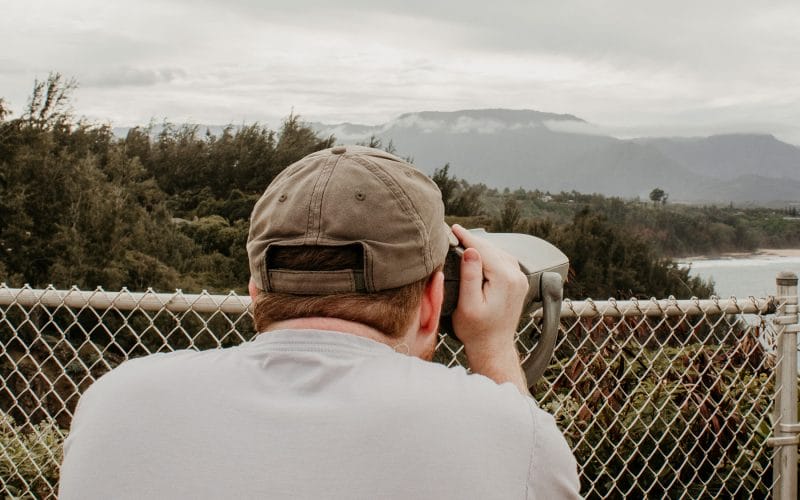

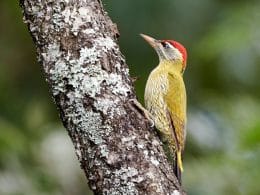
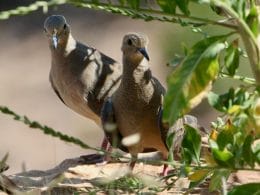
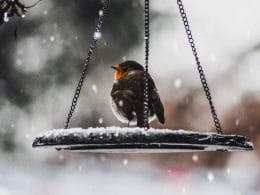
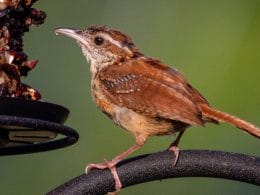
Hi, interesting article, I enjoyed reading it. As a pilot having been through formation flying school, I can tell you that a V formation is not called echelon. An echelon formation can be either right or left echelon, diagionally lined up behind the leader. But again, nice article.
Hi Will, great article thanks! Do you know if there is any evidence that geese allow the older geese to spend less time at the front of the V, due to reduced athletic ability as they age? And as to whether they therefore can provide a wider vantage point and spot danger more easily? Anecdotally I have heard both, but I am looking for some solid evidence! Thanks again